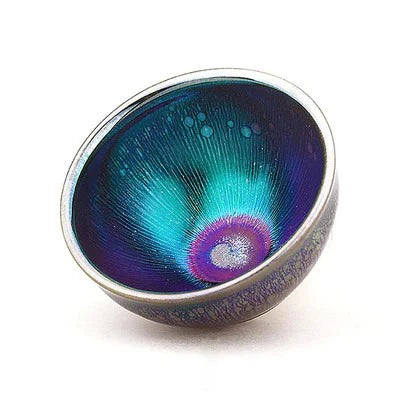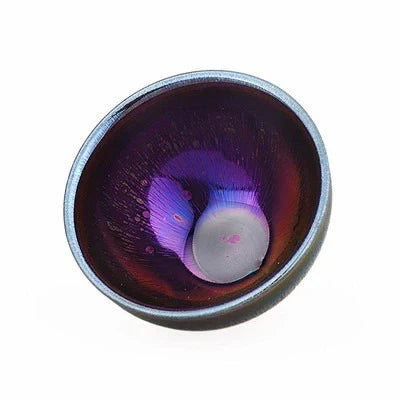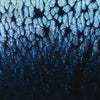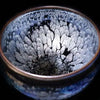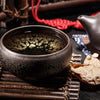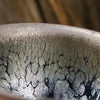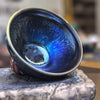CHOOSING YOUR AUTHENTIC NANPING JIANZHAN
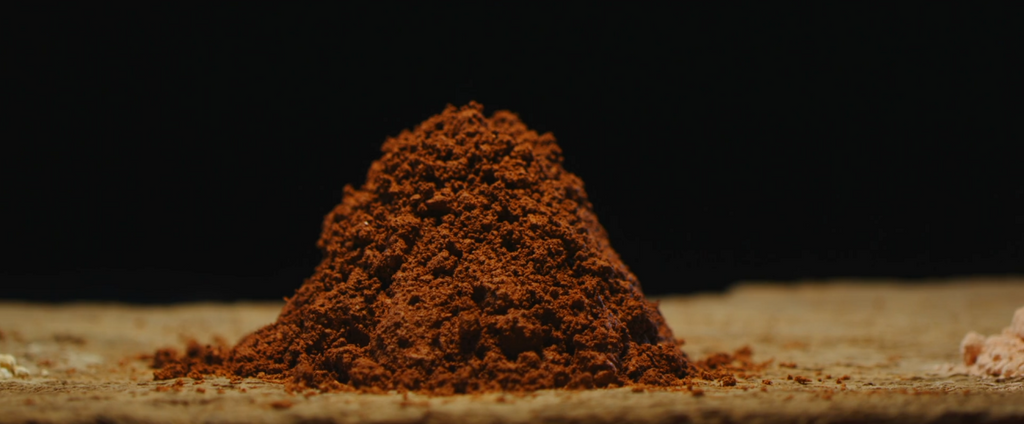
Before diving into this discussion, it’s essential to distinguish authentic Jianzhan from other types of porcelain. This guide isn’t about price or quality or trying to avoid anyone’s opinion; instead, it’s about understanding Jianzhan through experience. The author’s motivation for this article arises from frequent questions on how to choose Jianzhan and on details that aren’t readily available online, as answers often vary widely. This advice stems from personal experience and is backed by the recommendations of over 20 recognized masters in the field.
1. Observing Glaze Color
Examining glaze color is the fundamental criterion for choosing any porcelain. However, there’s no “best” glaze color, as it largely depends on personal taste. A mature Jianzhan collector avoids comparing colors as better or worse, as this pursuit for a “correct” answer may lead to reliance on others' preferences rather than your own. Consider choosing glaze colors that appeal to you personally rather than based on others’ opinions.
The traditional saying, “The best Jianzhan has a black or green base with smooth, uniform rabbit hair markings,” is often heard but provides little value when selecting according to your tastes. This adage, attributed to Song Huizong, speaks to his extensive exposure to Jianzhan but doesn’t dictate the preferences of collectors today. The enjoyment of collecting lies in discovering your own aesthetic preferences without influence from external standards.
Rabbit hair patterns come in various shades—yellow, silver, blue, red, gold, among others—with yellow being the most common, while silver is rarer.

Uniformity of Patterns
Typically, uniformity is desirable in oil drop patterns, though unique and appealing variations with less even markings also exist.
Size of Oil Drop Markings
The size of oil drop markings is influenced by firing temperature, atmosphere, and glaze materials, with temperature playing the largest role. Higher temperatures result in larger crystallized patterns, though larger oil drops aren’t necessarily harder to create. When choosing, go with what appeals to you: small, intricate oil drops resembling a starlit sky or larger, more prominent drops.
There is now a wide range of available glaze colors, with blue and silver being most common, alongside gold, yellow, red, green, and rainbow hues. When selecting, avoid over-prioritizing unusual colors.

Crystalline Texture
The crystalline texture is a more abstract concept and challenging to define, sometimes referred to as the “vitrification effect.” Generally, a heavier reduction atmosphere leads to a less vitrified texture and more active crystal structure, making it hard to determine quality based solely on texture.
2. Evaluating Shape
Jianzhan shapes range from functional (typically 6-12 cm in diameter) to ornamental (over 12 cm). Within functional sizes, common shapes include straight, flared, and inward-curving mouths, as well as various cup designs like the Yulan cup.
3. Important Considerations
Jianyang masters exclusively use iron-rich local clay, as all clay is sourced locally and not from other regions. This clay’s high iron content is a hallmark of authenticity.
Identifying Iron Clay
Checking the clay type by looking at the foot’s color isn’t always accurate since reduction and oxidation firings affect the foot’s color. While many pieces on the market show a “gray foot” due to reduction firing, oxidation or weak reduction can produce yellow, brown, or other colors. Similarly, using a magnet to identify iron clay can be misleading, as the body thickness, glaze thickness, and magnet size affect accuracy.

Master’s Reputation
Verifying a master’s reputation is generally recommended, as a well-known master is usually reliable. A master’s standing is built upon market recognition, leading to stricter quality, packaging, and promotional standards. However, the development of Jianzhan as a recognized art form is relatively recent, and most masters’ skill levels aren’t drastically different yet. Excessive focus on reputation can increase the risk of overpaying, and newer masters often offer quality work at competitive prices.
4. Editor’s Suggestions
Avoid comparing prices, especially as a beginner. While price comparison may seem logical, it’s seldom helpful. Beginners are unlikely to find significant deals without risk, as each master has a unique pricing structure. Price differences do not necessarily indicate quality issues, and variations within a single master’s work may also reflect quality and target market differences. Selecting pieces based on value for money can be helpful, but be cautious; lower prices don’t always mean better value. Consider multiple factors to make an informed choice.

